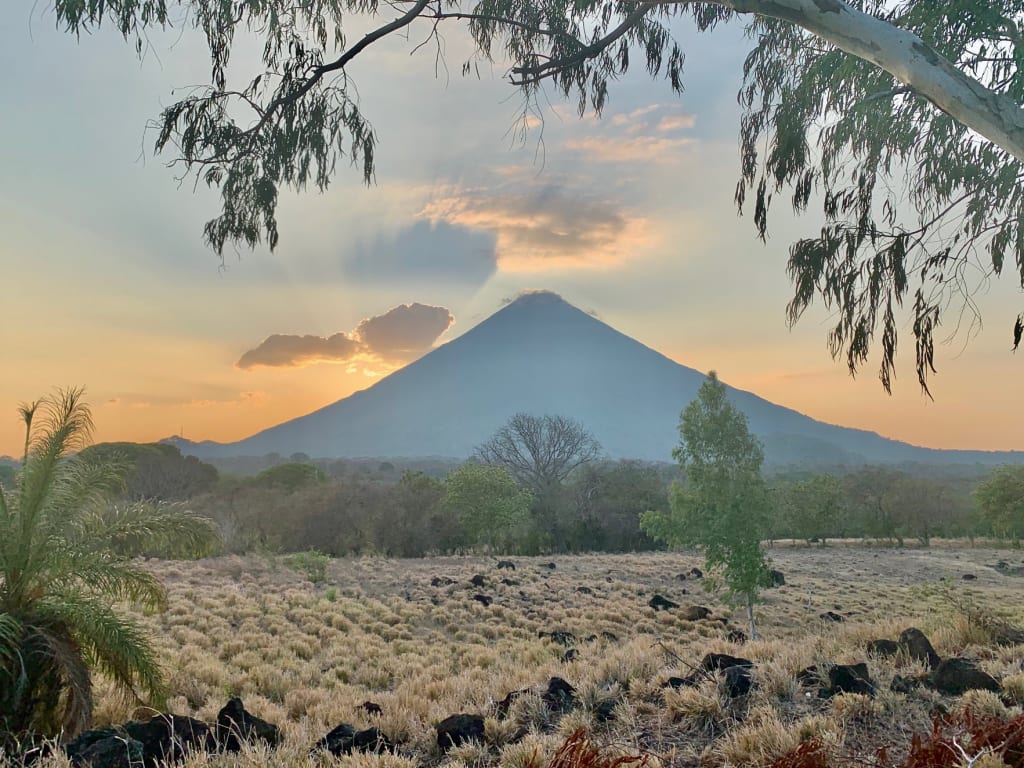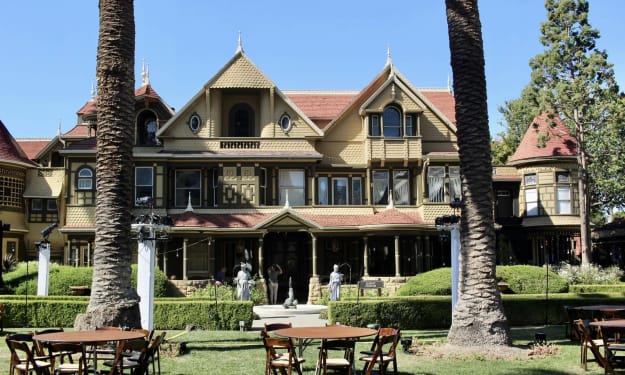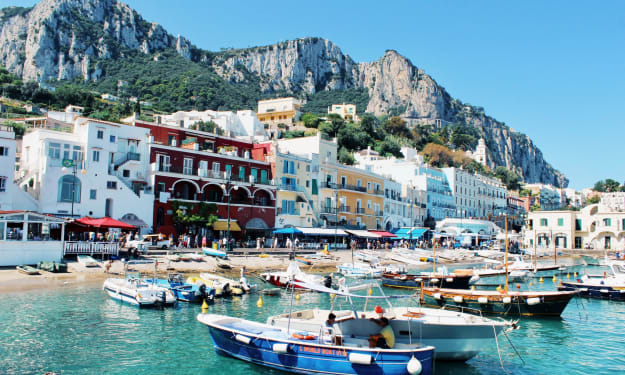
MY SOLO TRIP TO NICARAGUA - 2021
By Paul Meyer
Most people love to travel to find adventure, but few people travel to find love. On my upcoming solo trip to Nicaragua, I hope my journey ends in the lifelong embrace of a beautiful and yet mysterious woman I met on a dating app during Covid. Our romance will be complete if I also become enchanted with her country.
Judging from her looks on our Zoom calls, Malisa is as stunning as the spectacular white sand beaches of Nicaragua’s Caribbean island beaches. She is enigmatic and mysterious like the country’s soaring volcanoes I hope to climb during my winter stay. Malisa is an enigma in part because we surrendered to only exchanging texts and phone calls behind pandemic protocols for the time being.
Running away to Nicaragua as if I were Forrest Gump should turn out to be an easy stride to hit. My trek will come as I run hellbent and solo into a milestone 65th birthday year, and notch Nicaragua as the 50th country to have visited or lived in. I’m dreaming that my life in Nicaragua will be like the box of chocolates Forrest Gump puzzled over and relished at the same time.
When presented with a box of sweets or travel options, you discover many choices. You are left to muse what lies beneath the chocolate coatings or whether the travelogues are accurate. Based on what I have read and learned online, Nicaragua will be equally mysterious and yet richly rewarding when I savor each bite. Happily, getting to know Malisa and Nicaragua by Zoom and books and videos so far, the flavors have been delicious.
Besides the alluring Malisa, Nicaragua calls me because it is the only Central American country I have yet to visit. Also, when my Mother was afflicted with Multiple Sclerosis during my early teens, our family took in a young Nicaraguan nanny to help. Thelma sparked my interest in her country with her tales of sharks living in the giant freshwater Lake Nicaragua, the 19th largest in the world. These ocean-going killers adapted to lake life over eons after traveling upriver from the Caribbean along the legendary San Juan River.
I have also been intrigued with Nicaragua for its place in history – ranging from being one of the earliest Spanish colonies to the late 1980s Sandinista–Contra war; the connected famous arms deal controversy nearly toppled the Reagan presidency. In between, its heritage is rich with adventurism and political intrigue. Did you know an American vigilante William Walker was President of Nicaragua in 1856 and the American tycoon Cornelius Vanderbilt pioneered the first transcontinental passage across Nicaragua, predating the Panama Canal? US Marines were stationed there from 1912-1933, as Nicaragua was a quasi-protectorate of the US under the Bryan-Chamorro treaty. The occupation left scars of imperialism that became the seeds of the Sandinista movement. In spite of this awkward relationship, Nicaraguans adopted baseball as their favorite sport as a result of witnessing and participating in games played by US forces.
Many Americans naively think Nicaragua is a dangerous place to visit; from research and conversations with expats and travelers, I understand it is quite the opposite. Nicaragua has succeeded in avoiding the narcoterrorism afflicting neighboring Honduras or nearby Mexico. Its tranquility is due in large part to its deep-seated culture of family first, love of literature, and welcoming spirit. Poets, living and deceased, are national heroes there. Regrettably, this benevolent sounding idyll of Nicaragua is still governed by a dictator, the long-standing Sandinista Daniel Ortega.
My adventure to Nicaragua starting in January will be perfectly timed to coincide with their “summer” when the weather is sunny and largely rain-free. However, I am not wont to wait for the peak tourism season; I doubt now with Covid whether there is even such a period anymore. For future travelers, their sunny summer runs from December to May; their winter – meaning some daily rains but not deluges I am told – goes from June to November. The period of December to February is best -- I gleaned from Facebook postings, because the countryside is greenest from the rains of the preceding ‘winter’, while you bask in the constant and resplendent sunlight.
For the curious and interested travelers before embarking, I recommend you become members of Facebook groups dedicated to such topics as “Expats Living in Nicaragua” or “Backpackers in Nicaragua”. There you can easily exchange information for traveling and living in Nicaragua, and get useful tips and suggestions to improve your trip. (the same advice applies to any destination). Besides my dog-eared Lonely Planet Nicaragua guidebook, these Facebook groups served as the most potent resources for planning my looming adventure. I would also recommend consulting www.tripadvisor.com and www.wikipedia.com among other sources.
https://www.facebook.com/groups/168748323870124/?ref=share
https://www.facebook.com/groups/1019544238110437/?ref=share
Besides sightseeing and escapades, I also plan to reboot my dormant Spanish on my journey. In fact, my first stop will be Granada, where I am enrolled in a Spanish language program including an immersion experience. https://www.casaxalteva.org/ I will be living with a Nicaraguan family, so daily life after school will reinforce what I learn at school each day. Their program is flexible, but they encourage 4 hours Monday – Friday for the best results. According to reviews, their staff is well trained. I chose their program over many others because their non-profit mission is to deploy tuition revenues towards educating local underprivileged children. There are even opportunities to volunteer your spare time in these community-based efforts.
I selected Granada as my first Nicaraguan destination because it also offers a healthy mix of nearby places of interest and a comfortable living environment. Hailing from Los Angeles, I was pleased to uncover that I could live without being handcuffed to an automobile; Granada is an easily walkable city. Still, when I will need transportation, local taxis I am told cost about $0.80 per ride. I was pleased to also learn that a taxi lift doesn’t include a 10-minute pre-ride negotiation on price. According to those whom I consulted, many everyday business transactions are void of the weary haggling that oftentimes accompanies the most mundane of purchases like in many third world countries. I also found it fun to learn that taxi rides are usually shared, so I might rub shoulders with locals headed in the same general direction.
This communal ride sharing experience would normally lend itself to interesting exchanges with locals, practicing Spanish and seeing local life up close and unvarnished. However, “life in the time of Covid” prompts some concern for this cultural cornucopia on wheels. While sadly vaccines will be late arriving in Nicaragua due to its economic challenges, it is important to note that the officially reported infections and deaths due to Covid are in the lowest quartile in the world (5,838 cases and 161 deaths; population is about 6.5 million as of 12.3.20). However, I am cautioned by Nicas (how locals call themselves) the statistics are government-sourced, and such information is generally viewed skeptically. Still, according to Facebook group pages and news reports, the incidence of the Corona virus is definitely trending downward. Nicaragua has also been more successful as measured by Covid cases when compared to all its Central American neighbors. You will be surprised to learn all travelers to Nicaragua – by air, land and boat – are required to present proof of a negative Covid test result within 72 hours of arrival. This proactive approach stands in sad contrast to the lax approach and “test free” incoming traveler policy at US borders. The Nicaraguan test regimen and the knowledge that Covid levels are relatively low, are comforting and compelling support for my decision to travel there.
https://edition.cnn.com/interactive/2020/health/coronavirus-maps-and-cases/
During my month long stay in Granada, here are the many fascinating daytrips I have planned:
• Visit a live volcano – Masaya -- to peer into the crater and see the molten lava bubbling below. The national park is open from 8 am to 7 pm. It is recommended to visit after sunset – generally at 5:30 year-round as Nicaragua is close to the equator – since the bright red lava color is sharply contrasted against the black night sky.
• Take a day boat trip to visit the over 250+ little lake islands nearby to Granada. Some islands offer overnight accommodations, others restaurants, but for the adventuresome -- petroglyphs from ancient civilizations dating back over 500 years. Kayak tours and party / swim boat trips are also available.
• Spend a day or overnight on the shores of a volcanic crater lake – Apoyo – where I am told the waters are a refreshing cool respite from the tropical sun. On the return trip to Granada, I will make sure to visit Catarina, a nearby Apoyo village where the weather is thought to be an eternal spring – like Medellin, Colombia it is said. Here the locals take advantage of the hospitable climate to commercially grow decorative plants and orchids for sale. It is no surprise a pottery industry flourishes nearby and many of the small kilns are open to visitors.
• Hike another nearby volcano – Mombacho – which hovers over Granada like a watchful uncle. On the hike, I expect to encounter the ubiquitous howler monkey, easily recognizable by his screeching ‘howl’. Are you not surprised it is the male making all the noise in this species, ha?
• Travel by boat and then horseback for a daytrip to a coffee and cacao plantation in the foothills of Mombacho. Watch and learn how these two tropical crops are painstakingly transformed into your next Starbucks’ Mocha Latte.
• Roam the town of Masaya, just 20 minutes by car from Granada, which offers travelers an abundance of artisan products from leather purses to handmade clothing – a perfect place to shop for souvenirs and gifts.
• Explore the colonial town of Granada with its rich history dating back to 1524 when the city was officially formed (although indigenous people predated the Spanish). Granada flourished as a commercial hub for the Spanish, because of its nearby fertile agricultural land and connectivity to the Caribbean by passage across Lake Nicaragua and down the San Juan River. Yet this nautical position also encouraged periodic Dutch and British pirate attacks over many centuries. https://en.wikipedia.org/wiki/Granada,_Nicaragua
• Enjoy the delicious local Granada cuisine, along with creative meals served at restaurants that cater to the growing expat community. Here is a small list of the many culinary options Granada offers – El Zaguan, Garden Café, Pita Pita, Bocadillos, El Garaje, Picholine.
• Embrace the lively nightlife along the famous Calzada, a pedestrian friendly outdoor setting that offers dining, dancing, karaoke and people watching.
• Stay healthy after all the good food and drink, by joining the Jockey Club where tennis and swimming are available; or stop by the paddle tennis court on the lakeshore and join in a competitive game with locals and expats.
I might return to Granada, after leaving the immersion family experience and traveling in Nicaragua. For this reason, I have already identified some accommodations: Hotel Gran Francia, Hotel Patio Del Malinche, Hotel Plaza Colon. I am informed that due to the Covid tourism downturn, these high-end colonial era properties are available at $50-$80 per night. If I want to book an extended stay, I will check out options at www.gpsnicaragua.com for monthly vacation rentals.
Given all Granada has to offer, I am not surprised it is featured in the famous book “1000 Places To Visit Before You Die”.
My first destination after Granada is the Pacific beach resort San Juan Del Sur (“SJDS”). It is situated on a beautiful bay, hugged by hills dotted with luxury homes and hotels. SJDS is famous for being the Pacific portal in the transcontinental transport system Vanderbilt operated across Nicaragua starting in the 1850s. Mark Twain passed through SJDS on his way from San Francisco to New York, by way of Lake Nicaragua and the San Juan River. Besides the delicious seafood served in its bayside restaurants, SJDS will offer me a wealth of shopping and nearby day adventures such as:
• Sunset or sea life gazing sailboat trips
• Hike to the famous statue of Our Lady of Mercy, protectively overlooking the city (see white light atop hill in photo below)
• Hire a taxi or rent a car, motorcycle or ATV for a 30-minute drive to world class beaches. I will be able to surf or lounge with a book where the jungle caresses the seashore. There is also a national park protectorate beach nearby where I can watch turtles seasonally lay eggs.
• Fish or swim in the local SJDS waters.
• The Costa Rican border is 45 minutes by car or bus if the impulse to travel there tickles.
• While visiting SJDS, I expect to have many sleeping options, from backpacker hostels to luxury hotels, such as Hotel Victoriano, Pelican Eyes Resort, Casa Oro Hostel, Hotel Alcazar.
Next, I will travel to Ometepe Island, situated in Lake Nicaragua and crowned by two majestic volcanos, both over 4,000 feet in elevation. Mark Twain aptly captured in his 1866 newspaper report, how dramatic is the first sighting of the island and its volcanoes: “Two magnificent pyramids, clad in the softest and richest green, all flecked with shadow and sunshine, whose summits pierce the billowy clouds.”
https://www.nytimes.com/2010/09/19/travel/19footsteps.html
• Hike to the peaks of both volcanoes, and experience the transition in flora from subtropical to rainforest along rugged paths. I am promised my knowledgeable guide will point out the wide variety of plants and animals. I will be rewarded by a crater lagoon at the top of Maderas and dramatic views on Concepcion. Both sojourns are assured to test my stamina; the ascent and descent of both volcanoes averages 7 grueling hours each.
• During my resting time off between hikes, I can visit one of over 1,700 petroglyphic sites on Ometepe.
• I plan to stay in the village of Santo Domingo, which is midway between the two volcanoes. I hear there are good options for food and overnight stays in this north facing lakeshore hamlet. I have been warned the afternoon and evening winds buffeting this area are as strong as ocean trade winds, which attest to how large and wide Lake Nicaragua is – 110 miles by 36 miles.
After my Omepete quest, I will set out for the San Juan River, which at various points along its path from Lake Nicaragua to the Caribbean, serves as the boundary line with Costa Rica. I will travel by private car or bus, depending on Covid case levels at the time, to the jumping off town of San Carlos. Given time constraints, I will sadly forego visiting the nearby Solentiname Islands in Lake Nicaragua, which offer more petroglyphs sites and isolated fishing villages. If time permitted, I also would opt to take river panga boats all the way to the Caribbean port of Greytown. This is where Vanderbilt’s ocean faring boats of the 1850s picked up travelers like Mark Twain and California gold, to complete their journey to US eastern seaboard ports. Instead, I will step back in time with a stay in El Castillo, a riverfront town so small and rustic there are no motor vehicles allowed on its pebbled walkways. The town grew around an imposing fort the Spanish constructed in the 1670s, fatigued by the constant besieging of distant Granada by pirates. The precise placement was perfect as the fort looms over the only shallow portion of the San Juan River. Because the invading pirates needed to nimbly pass through river rocks here, this distraction afforded the Spaniards a formidable battle advantage.
From what I have read, El Castillo has a laid-back charm and slow pace. There are a handful of hostels and hotels to choose from, ranging in price from $7 to $25. I intend to visit the proximate Biological Reserve Indio Maiz by boat, to take in scenes of 1850s steamboat wrecks and some of the world’s most diverse and abundant wildlife. I will also meander through the quaint pueblo, relishing in the echoes and ghosts of a bygone era. To cement the historical perspective of my El Castillo visit, I may visit the local cemetery. I am told there dotting the hillside are tombstones of Sandinista soldiers who sacrificed their lives in service to their movement, to overthrow the Somoza regime and later defeat the Contras.
After returning to San Carlos, I will head north and east to the Caribbean coastal town of Bluefields, named after the Dutch pirate Blewfeldt, as he bivouacked there in between Granada raids. From what I read, the town has a distinct Caribbean vibe, accented by its racial mix of former British slaves to the reggae tunes carried along by trade winds. While past hurricanes have reduced the number of historic Victorian homes to a handful, I can’t help but dream when there that I will see pirate ships and frigates on the harbor’s horizon.
Bluefields is the main conduit for travel by boat to the largest and most popular Nicaraguan islands of Big Corn and Little Corn. From my inquires I know my sea trip there will take about 5 hours. In my planning, I opted to arrive by boat even though it is possible to travel to the islands by small plane from Managua, Nicaragua’s capital.
Big Corn is where the bigger boats and planes travel to. I know from my investigations the only way to get to Little Corn is by smaller boat. Since both islands offer plenty of snorkeling, scuba diving and swimming, I plan to spend a week on each. From pictures and journals online, I contemplate relaxing in the sun on broad white sand beaches and in picturesque coves sheltered by reefs. I am imagining my life there will be part Gilligan’s Island, part Robinson Crusoe. While visiting, I hope to get invited to a traditional “rondon”, a fish-bake unique to the islands – a slow-cooked coconut-based casserole of fish and seafood, alongside a variety of native vegetables and fruits.
After indulging in too much sun and lobster, I will fly to Managua and transit to Matagalpa, the center of Nicaragua’s coffee growing region. By this time, I will be longing for cooler climes and for pine trees in place of palm trees. I understand the temperatures may drop to 60 degrees at night – do I buy a sweater in Matagalpa – pray tell? I anticipate a bustling atmosphere in Matagalpa from what I have gleaned from social media postings. The city sits in a valley, and with hillsides restricting expansion, the city is somewhat dense like Quito or Bogota. It is the birthplace of Carlos Fonseca, the Nicaraguan equivalent to Ben Franklin or Thomas Jefferson. Because of this, and that much Contra war fighting took place in the mountains to the north, I would think the political sentiments run strongly Sandinista there. I will also visit the coffee museum, and savor the freshest coffee imaginable. Since I don’t want to percolate too long in Matagalpa, I will venture north 30 minutes to a unique resort called Selva Negra, which translates as “Black Forest” from Spanish. The private cabins, restaurant, and wedding chapel are the crown jewels of a larger, sprawling coffee plantation developed back in the 1860s by German immigrants. Like in Europe, there is vegetation on the roofs of many buildings, lending it a whimsical and Hansel and Gretel appearance. The Germans came to pioneer coffee growing and exportation to Europe and stake their fortunes to their newly adopted country. Impressively, Selva Negra is still in the hands of descendants of the original settlers, Mausi and Eddie Kuhl. While there, I will take full advantage of the immense trail network the Kuhl family built into the neighboring rain forests. Like a ski resort, the complex of “senderos” has a trail for every skill and interest level.
https://www.youtube.com/watch?v=rTHamScFzas
https://www.frommers.com/destinations/nicaragua/in-depth/environment
By now, I will have exhausted myself hiking among banyans and tripping over roots needing to be crossed over by pole vaulting. I expect by now I will also need a dose of culture, so I plan to leave for Leon, the other colonial city of Nicaragua’s plentiful history. Founded around the time of Granada in the 1520s, Leon was relocated after a volcanic eruption in 1610 leveled it. In a city state rivalry akin to that between Sparta and Athens, Leon laid claim to being the seat of intellectuals and culture while Granada was centered around commerce. In fact, the two cities warred for centuries until the 1850s. I am told to expect a bustling and youthful ambience in Leon, since many universities are located there. As a result, there is much political activism in Leon. The city is also famous for majestic churches and its cathedral, where the national holiday of Feast of the Immaculate Conception is celebrated in dignified and festive form.
After regaling in the charm and excitement of Leon for a week or so, I anticipate my travel plans will have reached a tipping point. I can only hold out for so long before I need to meet the elusive Malisa, and then hopefully continuing on an exploration of Nicaragua with her. I hope these destinations are where we can travel together:
• Somoto Canyon, oftentimes referred to as the Grand Canyon of Nicaragua.
• City of Chinandega, where one of the world’s leading rums, Flor de Cana, is produced.
• More of the Pacific coast, which boasts beautiful beaches and world class surf schools and spots.
• Vast expanses of the Atlantic coast, where some indigenous people still live in conditions harking back a century ago.
• The rugged inland and mountainous region, farther east of Matagalpa, where tobacco is king and many battles of the Contra war raged.
• Many of the national parks in Nicaragua, too many to list here. Like Costa Rica its neighbor to the south, Nicaragua has a bounty of natural beauty and resources awaiting future sojourns of ours.
Malisa is not so much elusive as at bay, keeping herself at a distance until she is comfortable enough to meet and satisfied I am not a Covid carrier. My thoughts are that we will communicate by Zoom and text during my adventures, so we can get to know each other more before finally meeting. Malisa and I have already jokingly coined our cyber romance as “Love In The Time Of Covid” a word play of Gabriel Garcia Marquez’s famous novel “Love In The Time Of Cholera”. I have already imagined that by this time in my adventure, in our first encounter, my Spanish is stronger from my travels. Since Malisa is a skilled dancer and has vast musical tastes, perhaps I will spend some idle time beforehand, watching YouTube videos of salsa and Luis Enrique songs.
For those of you have not yet read “Love In The Time of Cholera”, to appreciate the parallels with my Nicaraguan journey and eventual path to Malisa’s heart (hopefully), click on this link for plot summaries.
https://en.wikipedia.org/wiki/Love_in_the_Time_of_Cholera#Narrative_as_seduction
As you will discover from reading the Wikipedia explanation, the book chronicles a man’s lifelong languishing in love with a woman he could not have. While the parallels between my travels and the trials of Florentino (the lovesick book character) are thinly traceable, my adventures under the cover of Covid, will be at times strangely similar to the torment Florentino suffered. It will not be the occasional mosquito bite or at times insufferable heat and humidity that will have caused me real pain. It will be the waiting and wondering from a distance, through the lens of Zoom calls and texts, until Malisa and I finally meet. Awkwardly, like Florentino, who even enjoyed the suffering he endured for the long-anticipated love of Fermina, I will need to first relish my Nicaraguan travel as a distraction from Malisa. The marathon romantic torment Florentino suffered sustained him, for he saw his anguish as a gratifying, strengthening experience that led him to his ultimate desire: Fermina; for me it will be discovering Malisa in person for the first time.
Travel, whether in Nicaragua or elsewhere while in Covid times, is going to surprise you like the box chocolates Forrest Gump pondered over. Every day, every place, every chocolate, is a new experience – and each will be another unknown bite, some sweet, others perhaps bitter, but you really won’t know until you have traveled, and tasted them. I promise you I will not pass over the chocolate choices and I truly hope to especially delight in the Malisa one.
About the Creator
Paul Meyer
I take the less traveled path when facing a fork. Join me on the journey. You will hear thunder in the shape of a heart. And smell the sweetness and sorrow of living. And taste colors of the winds. And we will touch and hold one another.
Enjoyed the story? Support the Creator.
Subscribe for free to receive all their stories in your feed. You could also pledge your support or give them a one-off tip, letting them know you appreciate their work.






Comments
There are no comments for this story
Be the first to respond and start the conversation.